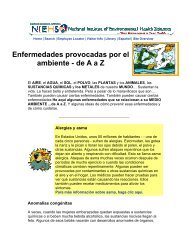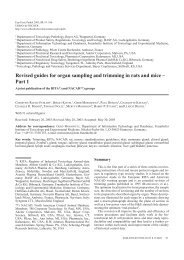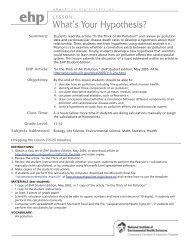Nuclear Energy: the Good, the Bad, and the Debatable - Curriculum ...
Nuclear Energy: the Good, the Bad, and the Debatable - Curriculum ...
Nuclear Energy: the Good, the Bad, and the Debatable - Curriculum ...
You also want an ePaper? Increase the reach of your titles
YUMPU automatically turns print PDFs into web optimized ePapers that Google loves.
Assignment 2 - From dose to death.<br />
How much time can you sit out in <strong>the</strong> sun before you get burned? Would <strong>the</strong> solar radiation<br />
from one sunburn give you skin cancer? If not, how many sunburns would it take? Would longterm<br />
sun exposure (even without sunburns) be enough to give you cancer? How would you go<br />
about figuring out <strong>the</strong> relative impact of one long day at <strong>the</strong> beach without sunscreen, vs. a<br />
summer of doing yard work with sunscreen? Besides, not all sun exposure is bad. We need <strong>the</strong><br />
sun's rays to help us break down Vitamin D, which is essential to healthy skin. Where is <strong>the</strong><br />
trade off?<br />
When it comes to nuclear radiation, <strong>the</strong>re is also a health trade off. For example, nuclear<br />
radiation can be used to kill cancer cells in humans. It can also be used to image <strong>the</strong> body, like<br />
in MRIs <strong>and</strong> X-rays, in order to diagnose disease <strong>and</strong> injury. These are both positive things.<br />
However, uncontrolled radiation exposure from sources such as radon in our basements, or from<br />
nuclear power plant accidents, or from poor nuclear waste disposal can do us a lot of harm.<br />
So, how much radiation would it take to give someone cancer? How much to kill <strong>the</strong>m?<br />
Scientists are still trying to link radiation exposure to disease, but it's not easy to quantify a<br />
radiation dose since it depends on several factors, such as <strong>the</strong> length of time that person is<br />
exposed, whe<strong>the</strong>r <strong>the</strong>y ingested <strong>the</strong> radiation or walked by it, whe<strong>the</strong>r <strong>the</strong> source emitted alpha,<br />
beta, or gamma radiation, <strong>and</strong> which body organs were exposed.<br />
For example, <strong>the</strong> radiation absorbed by <strong>the</strong> body is different for alpha, beta, <strong>and</strong> gamma<br />
radiation. Exposure to alpha radiation is considered to be 20 times more severe than exposure to<br />
beta or gamma radiation. That is, if you are exposed to 1 unit of alpha radiation by ingestion,<br />
for example, it's <strong>the</strong> same as being exposed to 20 units of beta or gamma radiation. And if you<br />
think that's confusing, consider this: <strong>the</strong> risks increase depending on which body part comes into<br />
contact with that radiation. Your lungs are more than 2 times more likely to be damaged by<br />
radiation than, let's say, your bladder. So, in some cases, if you breath radiation it's worse than<br />
if you drink it.<br />
The unit used in quantifying radiation dose is called <strong>the</strong> Sievert (Sv). The Sievert is <strong>the</strong> ratio of<br />
<strong>the</strong> radiation energy (Joules) to <strong>the</strong> total mass exposed (kilograms). So, for example, it takes a<br />
lot more radiation energy to give a 300 pound football player a dose of 1 mSv (that's 0.001 Sv)<br />
than it does to give <strong>the</strong> same dose to a 5 foot tall gymnast. This works in <strong>the</strong> same way that it<br />
would take more sugar to sweeten a gallon of coffee than a cup of it. To put <strong>the</strong> Sievert in<br />
perspective, consider this: an instantaneous dose of 1 to 3 Sieverts could cause you severe<br />
nausea <strong>and</strong> infection. An instantaneous dose of 10 Sieverts would kill you!<br />
The average American is exposed to 3.6 milli-Sieverts per year under normal circumstances.<br />
Up to 80% of this radiation comes from natural background sources like <strong>the</strong> sun, rocks, <strong>and</strong> from<br />
concrete <strong>and</strong> brick. Of course, this exposure varies with location. For example, people living in<br />
<strong>the</strong> mountains are exposed to more solar radiation than those at low elevations. Also, when you<br />
fly in an airplane, your exposure increases by almost 50%. This is because, at high elevations,<br />
<strong>the</strong>re is less atmosphere to protect you against <strong>the</strong> suns rays.<br />
Lana Aref © Massachusetts Institute of Technology� <strong>Nuclear</strong> <strong>Energy</strong>








